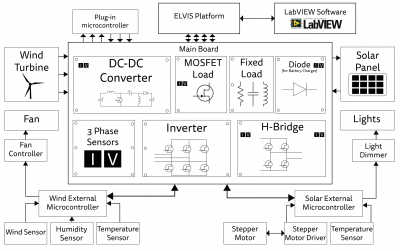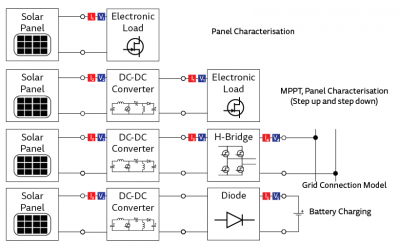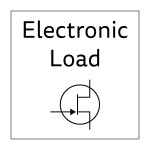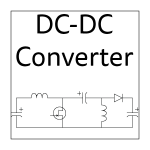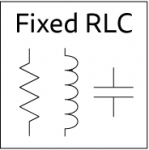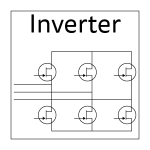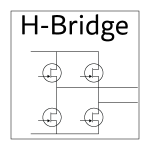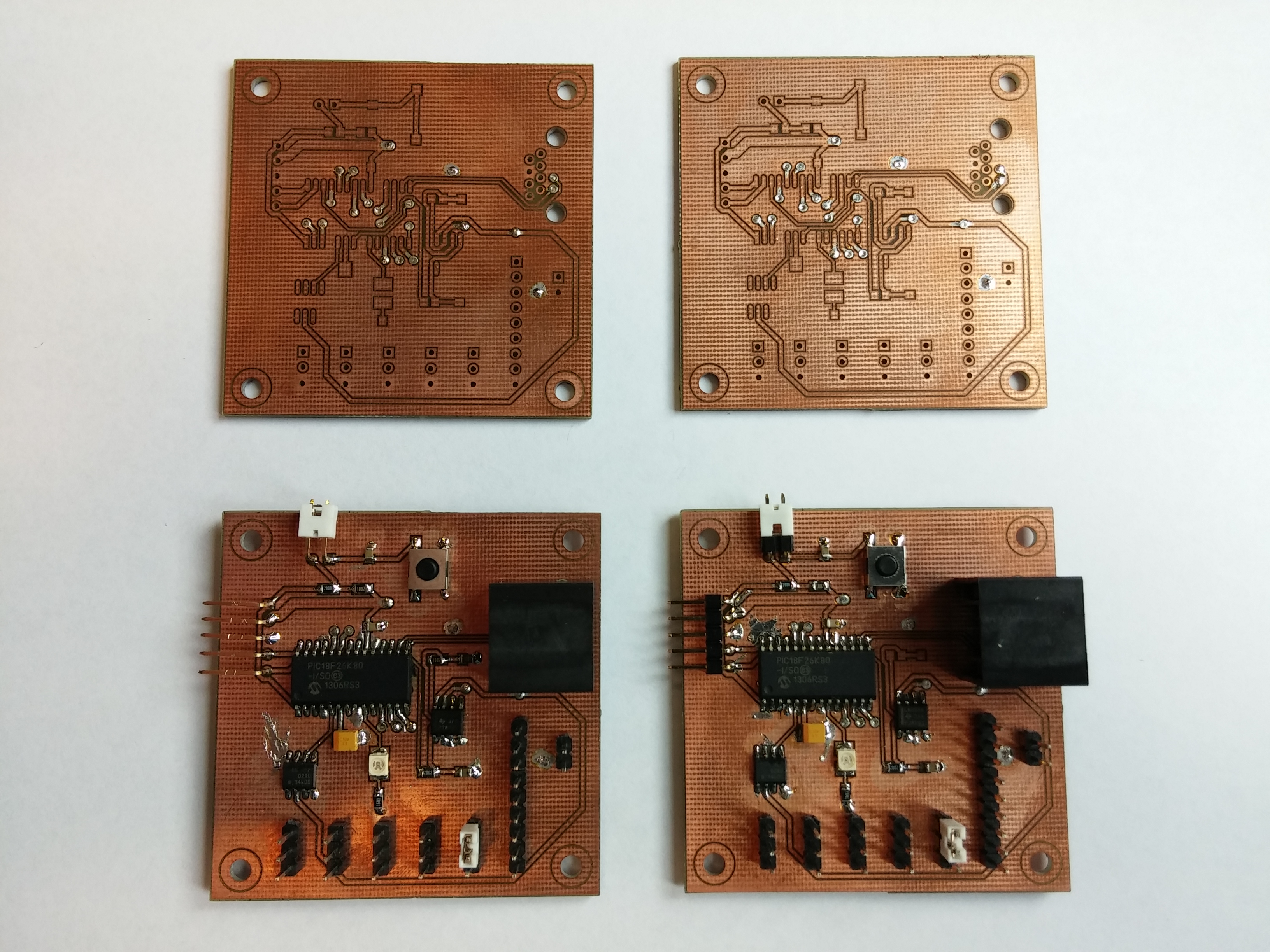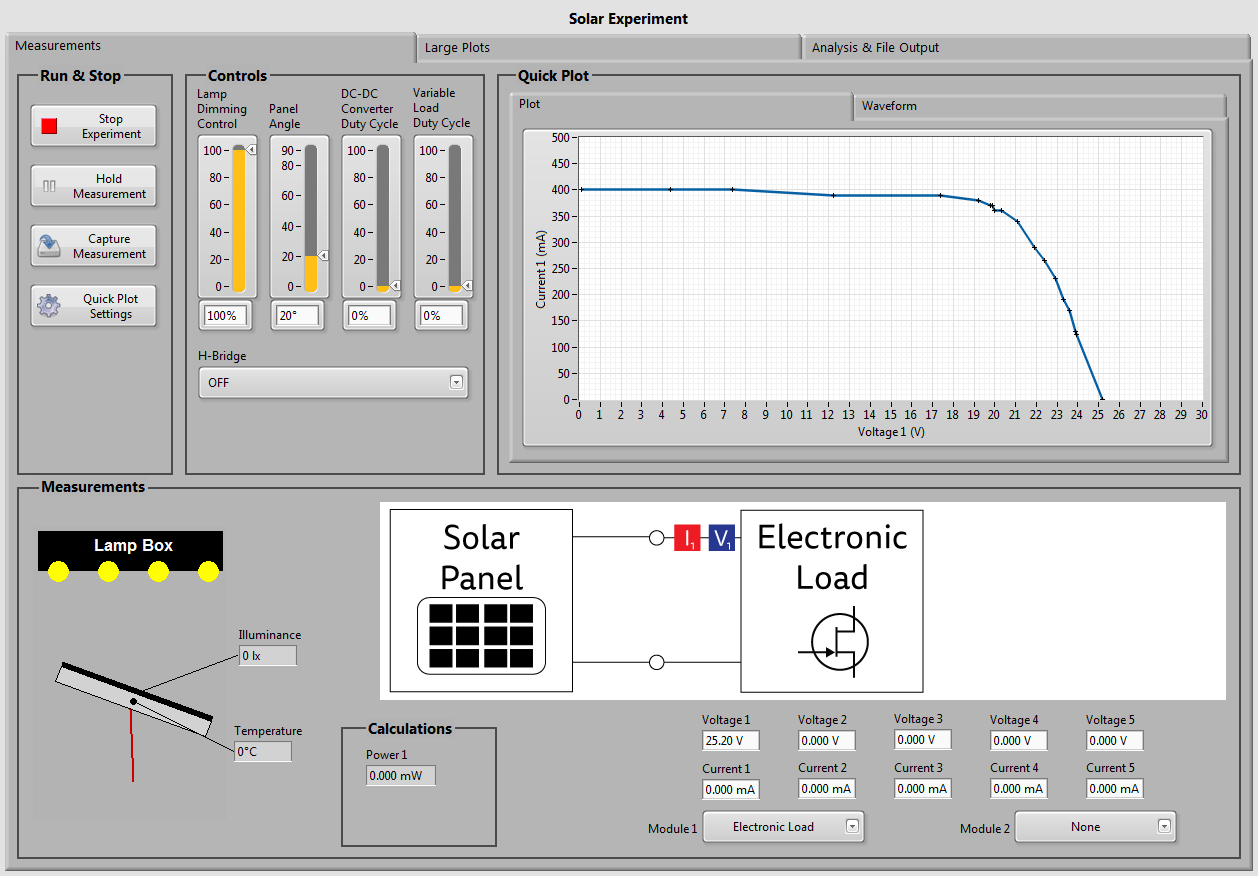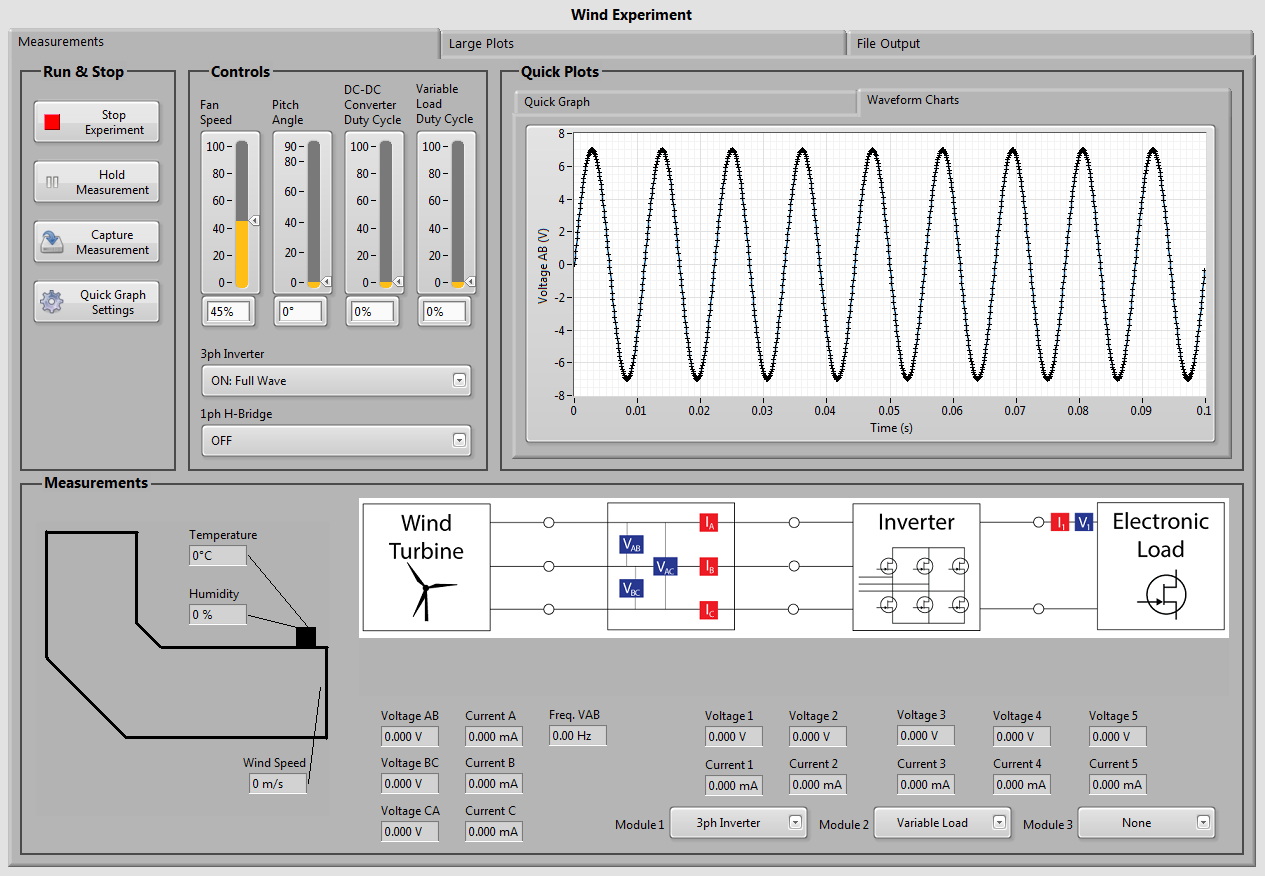Projects:2014s2-74 Antonomous Robotics using NI MyRIO
This project is focus on designing and building up an autonomous robot by utilizing the integrated microcontroller FPGA called MyRIO Device provided by National Instrument, which is based the requirements of 2014 National Instruments Autonomous Robotics Competition (NI ARC).
Contents
Project Overview
Project Aims
The aim of the project is to design and build an autonomous robot that would be able to satisfy the requirement in National Instruments Autonomous Robotics Competition 2014 (NI ARC). The key robotics area of this year's competition is path planning, obstacle avoidance and object handling. Our group isn’t took part in the competition due to the different timings of the honours project and competition. Nonetheless the rules and guidelines of the competition provide the specifications for the robot that the group will design and build. For the competition, teams must use the NI MyRIO device and the LabVIEW development environment to program the majority of the code for the robot.
Project Introduction
Each year, National Instruments (NI) sponsors a competition to showcase the robotics capabilities of students by building autonomous robots using one of their microcontroller and FPGA products. In 2014, the competition focuses on the agriculture setting where the robots will need to communicate with a device, collect seeds, navigate an obstacle course, and then deposit the collected seeds. The key robotics application focus areas for the 2014 competition are: •Obstacle avoidance •Object handling •Navigation This project investigates the use of the NI FPGA/LabVIEW platform for autonomous vehicles. The requirements of the competition will form the basis of the desired project outcome. The autonomous robot is mainly contains of three major parts for development: software algorithm and architecture design, vision system design, and hardware system design. The project would require basic electrical knowledge, mechanical knowledge and software programming to build the required robot. The rules and guidelines of the competition provide the competing teams and our honours group with the functional requirements of the robot. This information will therefore define the scope of the honours project. The rules for the time limits and points scoring scheme will be omitted as they do not affect the design of our robot. The competition objectives are: 1. The robot will begin from the Start Area and make its way to the Seed Collection Area. Bumping into any obstacle or wall during its way to the Seed Collection Area will result in a penalty. 2. Once the robot has reached the Seed Collection Area, a team member (simulating a conveyor system) will load a number of seeds onto the robot to be transported to the Farming Area. 3. The robot must make its way to the opening of the Farming Area. Again, bumping into any obstacle or wall will result in a penalty. 4. Using the coordinates received prior to commencing the task, the robot must navigate to the best ploughed row and zone to plant the seeds. The robot continues planting at the next best zones until it has run out of seeds. The robot must drop the seeds within the specified area.
Previous Studies
Robotic as one of the most heated application in electrical and mechanical engineering, a lot of work and example were done by other people in the past decades. These robots would be having a wide range which including quad copters, kinetic robots, vehicle models, and industrial robot applications etc. For the student orientated autonomous robot the most common ones are known as the Arduino, NXT (Lego) robots, the National Instrument robot and other related microprocessor based robotics. However, the main difference of our project when compared with the others, is that we will be utilizing the NI MyRIO devices which is a recent product lunched by National Instrument, and we are the first batch of people who is focus on the development of autonomous robot based on the MyRIO device. So there might not be much information available in regards of the MyRIO robotics development. Yet the previous example robot and projects could be a good way to approach this project design, as the principle and consideration for building up a robot is similar in a scale. For the National Instrument robotics, the previous project and competition is mainly focus on the CompactRIO Device, which is quite similar to ours and could be a reference for developing our own robots.
Objectives of the project
The major aim of this project is to develop a printed circuit board (PCB) to plug into the ELVIS system which can be utilised using LabVIEW software to carry out renewable energy experiments.
This will involve:
• Developing sufficient circuitry to trace basic generator characteristics
• Developing circuitry to demonstrate principles of Maximum Power Point Tracking (MPPT) utilising power electronic converters
• Developing LabVIEW software to control experiments and measure and display values
Hardware Component and Detail Design
System Architecture
The Solar External Hardware block includes: a PV panel; a stepper motor; a lamp box; sensors; and the mechanical structure that holds these components together. The stepper motor controls the angle of the PV panel. The lamp box will simulate the sun and consists of down lights, down light transformers and a dimmer. Sensors include a temperature sensor and a light intensity sensor.
The Wind External Hardware block includes: a wind tunnel; wind turbine and generator; and sensors. The generator is a hobby BLDC motor. The sensors include wind speed, temperature and humidity sensors.
One main PCB and several sub PCBs will be designed and constructed in this project. The main PCB will provide circuitry and data acquisition capability required to find the characteristics of the PV panel and the wind turbine. Two fixed load PCBs will provide a platform of the RL and RC tests for the wind system. A microcontroller PCB will control the buck/boost converter, 3 phase inverter and 1 phase H-bridge inverter. External microcontroller PCBs will also control and receive data from the wind speed sensor, temperature sensors and the humidity sensor.
The desktop computer will run an educational LabVIEW program that will be developed in this project. The LabVIEW program will guide students through experiments, and allow students to control on-board and external hardware, take measurements from on-board and external sensors, and analyse those measurements.
Wind System
The wind system includes the electric fan, fan controller, wind external micro-controller, wind speed sensor, humidity sensors and temperature sensors.
the wind tunnel provides the uniform wind for testing. The electric fan is on top of the wind tunnel. The electric fan is controlled by LabVIEW through external wind micro-controller. The electric fan can provide the wind power to the wind turbine.
Wind Tunnel
A variable pitch propeller and motor set is used for the generator initially. The set used for the test is a 1600KV motor and a 10-inch diameter propeller. It generates power at 1600rpm/V. The wind turbine is controlled by LabVIEW and the three phase AC power signal will be sent to the main board for further test.
The wind power generated by the wind turbine can be calculated from the equation P=1/2 ρAC_p v^3, where P represents the power generated by the wind power; ρ represents the air density; C_p represents the efficiency of the wind turbine; A represents the swept area of blades and v represents the wind speed. Humidity and temperature affect the value of air density. Therefore, wind speed sensor, humidity sensor and temperature sensor are required for the wind system to calculate the efficiency of the wind turbine and take further tests. The wind speed sensor is located at the exit of the wind tunnel, right in front of the wind turbine, to get accurate wind speed near the wind turbine. The temperature and humidity sensor are located on top of the exit of the wind tunnel.
Sensors for Wind System
Experiments using the Board
| Solar |
| Wind |
- Circuits
Microcontroller Boards
Plug-In Microcontroller Board
The purpose of the plug-in microcontroller board is to provide the control signals for the modules on the main board. It was designed as a separate board so that it could be easily interchanged with different microcontroller boards. Also this allowed for easier testing and replacement. The PIC24FV16KM204 was chosen as the microcontroller for the plug-in board. Commands from LabVIEW are sent over SPI.
The plug-in board has sixteen analogue inputs, to sense all the main board voltages and currents. It has ten outputs for controlling the circuits on the main board.
External Microcontroller Board
The purpose of the external microcontroller boards is to perform analogue-to-digital functions on the external sensors (e.g. wind speed sensor), control the external parameters of each system (e.g. solar panel angle). Commands from LabVIEW are sent over SPI. The sensor values are sent back to LabVIEW over SPI. A generic external board was designed, so that it could be used with both the wind and solar system. The PIC18F26K80 was chosen as the microcontroller for the external boards.
The board has five sensor inputs and external pins. Each of these has a ground pin, +5V supply pin and an input signal pin. A +5V voltage reference IC is powered from +15V to provide a reference for analogue-to-digital conversions. The board has an analogue output with a gain that can be set with an on-board operational amplifier. The board also has general purpose input/output pins.
Software Architecture Design
Quiz
A quiz program was developed to be integrated into the main program. It will test students’ knowledge of basic concepts before the experiment.
Experimental Panels
Experimental panels provide the user with controls for the various parameters of the solar system, wind system and main board. Data acquisition gets data from the sensors and this is displayed real-time on the screen. The “Capture Measurement” button allows users to capture all measurements simultaneously. Waveforms and captured data are displayed in plots for visualisation. File output features allow users to save their captured data to a spreadsheet. Students can then do post processing and generate graphs for reports.
Future Work
As our project timeline is close to the end, hence we might not be able develop the new functions and tested out in the field. However, as a pioneer of the MyRIO robotics development, our work would be of great benefit to those people who will be continuing for our project. For the object handling design, we haven’t implement a comprehensive mechanism which could be further developed as a robot arm or spinning wheels that could handle multiple seed collection. For the locomotion system, we’ve been only using a two wheel control system which is difficult to achieve turning movement, for future development it could be upgraded to a four wheel drive system or design a powerful control program which would be able to turn during forward or backward movement.
Team Management
Team Members
- Mr Jiannan Li
- Mr Martin Nobis
- Mr Zhanxiang Gong
Supervisors
- Prof Cheng Chew Lim
- Dr Hong Gunn Chew
Team Member Responsibilities
Group 74 has three members and the responsibilities have been allocated as follows:
- Zhanxiang is responsible for all the robot hardware design, testing and installation, which includes the power system ,motion system and the chassis / layout of the robot
- Martin is responsible for the robot software architecture design, which mainly includes the LabVIEW program development for the robot's internal system
- Jiannan is responsible for the robot's sensor deployment, which mainly about developing the vision system using Xbox Kinect Sensor and delopying the sonar sensor for the robot
Project Timeline
Starting at the beginning of August 2014,The final year project lasts for one academic year which contains of 24 working weeks in total. However, the actual working schedule might not be 24 weeks since we only have 10 weeks in semester 2 to finish all the required parts before the final demonstration. And we could also utilize the holiday period to perform our works although it is not recommended. There are three main milestones throughout the whole project, which are: Milestone 1 MyRIO basic I/O Interfacing Milestone 2 Prototype Robot Development Milestone 3 Final Robot Construction
Resources
- Computer
- DC Power Supply
- Laboratory Benches
- Oscilloscope
- Signal Generator
- LabVIEW 2014 Software
- NI MyRIO Device
- Soldering Stations
